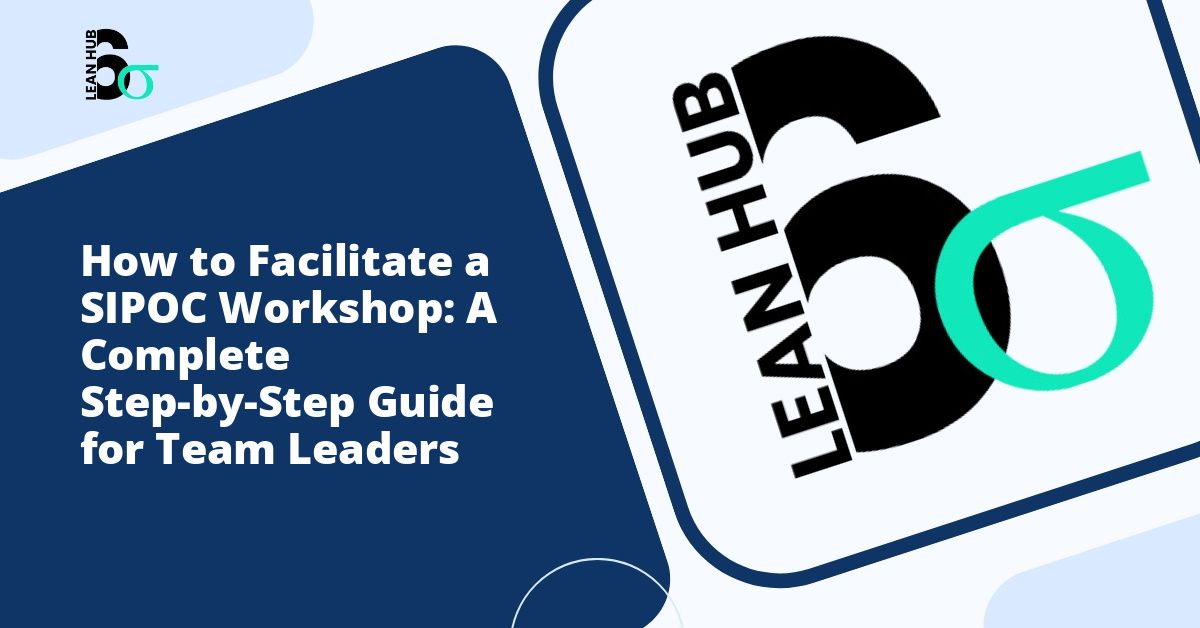Process improvement initiatives require a solid understanding of workflows, inputs, and outputs before any meaningful changes can occur. The SIPOC diagram serves as an essential tool for team leaders looking to map processes and establish a common understanding among stakeholders. This comprehensive guide will walk you through facilitating an effective SIPOC workshop that sets the foundation for successful process improvement efforts.
Understanding the SIPOC Framework
SIPOC stands for Suppliers, Inputs, Process, Outputs, and Customers. This high-level process mapping tool originated from lean six sigma methodology and provides teams with a clear visualization of key process elements. Before diving into the facilitation steps, team leaders must grasp what each component represents. You might also enjoy reading about From VOC to CTQ: How to Translate Customer Feedback into Measurable Metrics.
Suppliers are the individuals, teams, or organizations that provide resources to your process. Inputs represent the materials, information, or resources that suppliers provide. The Process consists of the high-level steps that transform inputs into outputs. Outputs are the products, services, or information that result from the process. Customers are the recipients who receive and use the outputs. You might also enjoy reading about SIPOC Analysis Explained: Understanding Your Process at 30,000 Feet.
Pre-Workshop Preparation
Success in facilitating a SIPOC workshop begins long before participants enter the room. Thorough preparation ensures that your session runs smoothly and produces valuable results. You might also enjoy reading about How to Write a Lean Six Sigma Project Charter: Step-by-Step Guide with Examples.
Identify the Right Participants
Select team members who have direct knowledge of the process you plan to map. Include representatives from different functional areas to gain diverse perspectives. The ideal group size ranges from five to ten participants, providing enough viewpoints without creating an unwieldy team dynamic.
Define the Process Scope
Clearly establish the boundaries of the process you will examine. Determine where the process begins and ends. A well-defined scope prevents the team from getting lost in unnecessary details during the workshop. Document the process name, its start point, and its end point before the session begins.
Prepare Materials and Space
Gather the necessary supplies including large sheets of paper or a whiteboard, sticky notes in different colors, markers, and tape. Arrange the meeting space to encourage collaboration, ensuring all participants can easily view and contribute to the SIPOC diagram. If conducting a virtual workshop, prepare digital tools such as collaborative whiteboards or shared documents.
Step-by-Step Workshop Facilitation
Step 1: Set the Context and Objectives
Begin the workshop by explaining the purpose of creating a SIPOC diagram. Help participants understand how this exercise fits into broader improvement initiatives. During the recognize phase of your improvement project, the SIPOC diagram helps teams identify the process boundaries and key elements before diving deeper into analysis.
Clearly state the workshop objectives and expected outcomes. Establish ground rules for participation, encouraging open communication and equal contribution from all team members. Allocate time expectations for each section of the workshop to keep the session on track.
Step 2: Start with the Process
Despite SIPOC being an acronym that suggests a specific order, experienced facilitators know to begin with the “P” for Process. Ask the team to identify four to seven high-level steps that describe how inputs transform into outputs. Keep these steps at a high level, avoiding the temptation to document detailed sub-processes.
Use action verbs to describe each process step. For example, instead of writing “Customer Order,” use “Receive Customer Order” or “Process Customer Request.” This approach creates clarity and maintains consistency across the diagram.
Step 3: Identify the Outputs
Once the process steps are established, move to the outputs. Ask participants what products, services, information, or deliverables result from this process. List all outputs, even if they seem minor or secondary. Some processes produce multiple outputs, and capturing all of them provides a complete picture.
For each output, consider both tangible and intangible results. A manufacturing process might produce physical products as well as documentation or data reports. Service processes often generate information, completed tasks, or satisfied customer needs as outputs.
Step 4: Define the Customers
After identifying outputs, determine who receives them. Customers can be external clients, internal departments, or downstream processes. For each output listed, identify the corresponding customer or customers. Some outputs may have multiple recipients, so ensure comprehensive documentation.
Distinguish between direct and indirect customers when relevant. Direct customers immediately receive the output, while indirect customers may benefit from it later in the value chain. This distinction becomes particularly important when identifying improvement opportunities.
Step 5: Determine the Inputs
Work backward from the process to identify what resources, materials, or information are necessary for the process to function. Inputs should be specific and concrete. Rather than listing “information,” specify “customer specifications” or “inventory data.”
Consider all categories of inputs including materials, information, labor, equipment, and environmental factors. The lean six sigma approach emphasizes understanding variation in inputs, as this often contributes to variation in outputs. Documenting all relevant inputs sets the stage for future analysis.
Step 6: Identify the Suppliers
Finally, determine who or what provides each input. Suppliers may be external vendors, internal departments, or automated systems. Match each input to its source, creating clear connections across the diagram.
Document supplier names specifically rather than using generic terms. Instead of writing “vendor,” list “ABC Manufacturing Company” or “IT Department.” This specificity proves valuable when conducting follow-up analysis or implementing improvements.
Facilitating Productive Discussion
Throughout the workshop, your role as facilitator extends beyond simply recording information. Encourage quiet participants to share their perspectives while managing dominant voices that might overshadow others. Ask probing questions to clarify ambiguous statements and challenge assumptions that may limit the team’s thinking.
When disagreements arise about process details, acknowledge different viewpoints and guide the team toward consensus. If consensus cannot be reached on certain elements, document the areas of disagreement for further investigation after the workshop.
Validating and Finalizing the SIPOC
After completing all five sections, review the entire diagram with the team. Check for consistency and completeness. Verify that the process steps logically connect inputs to outputs. Ensure that every output has an identified customer and every input has a known supplier.
Ask the team if any elements are missing or if anything needs clarification. This validation step catches oversights and ensures that the SIPOC accurately represents the current state of the process. Remember that during the recognize phase, accuracy matters more than perfection.
Post-Workshop Actions
Document the final SIPOC diagram in a clean, professional format. Distribute the completed diagram to all participants and relevant stakeholders. Schedule a follow-up meeting to review any items that required additional research or clarification.
Use the SIPOC diagram as a foundation for deeper process analysis. It serves as a reference point for identifying improvement opportunities, eliminating waste, and streamlining workflows. The diagram also proves valuable when onboarding new team members or explaining the process to stakeholders unfamiliar with the details.
Common Facilitation Challenges
Even experienced facilitators encounter obstacles during SIPOC workshops. Some teams struggle with maintaining the appropriate level of detail, wanting to document every minor step or variation. Remind participants that SIPOC diagrams provide high-level overviews, not detailed process maps.
Other teams may debate whether certain elements belong in specific categories. Use your judgment to guide these discussions, remembering that the primary goal is shared understanding rather than perfect categorization. The value lies in the conversation and alignment that occurs during the workshop, not just in the final diagram.
Conclusion
Facilitating an effective SIPOC workshop requires preparation, structure, and skilled guidance. By following this step-by-step approach, team leaders can create valuable process maps that serve as foundations for improvement initiatives. The SIPOC diagram bridges the gap between high-level understanding and detailed analysis, making it an indispensable tool in the lean six sigma toolkit. With practice and attention to the principles outlined in this guide, you can lead workshops that generate clarity, build consensus, and set the stage for meaningful process improvements.








